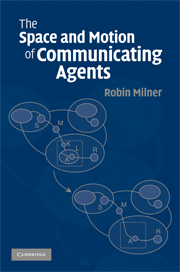2 - Defining bigraphs
Published online by Cambridge University Press: 05 August 2012
Summary
In Section 2.1 we define bigraphs formally, together with fundamental ways to build with them.
In Section 2.2, using some elementary category theory, we introduce a broader mathematical framework in which bigraphs and their operations can be expressed. The reader can often ignore this generality, but it will yield results which do not depend on the specific details of bigraphs.
In Section 2.3 we explain how the concrete place graphs, link graphs and bigraphs over a basic signature each form a category of a certain kind. We then use the tools of the mathematical framework to introduce abstract bigraphs; they are obtained from the concrete ones of Section 2.1 by forgetting the identity of nodes and edges.
Throughout this chapter, when dealing with bigraphs we presume an arbitrary basic signature Κ.
Bigraphs and their assembly
Notation and terminology We frequently treat a natural number as a finite ordinal, the set of all preceding ordinals: m = {0, 1, …, m − 1}. We write S # T to mean that two sets S and T are disjoint, i.e. S ∩ T = ∅.
- Type
- Chapter
- Information
- The Space and Motion of Communicating Agents , pp. 14 - 27Publisher: Cambridge University PressPrint publication year: 2009

